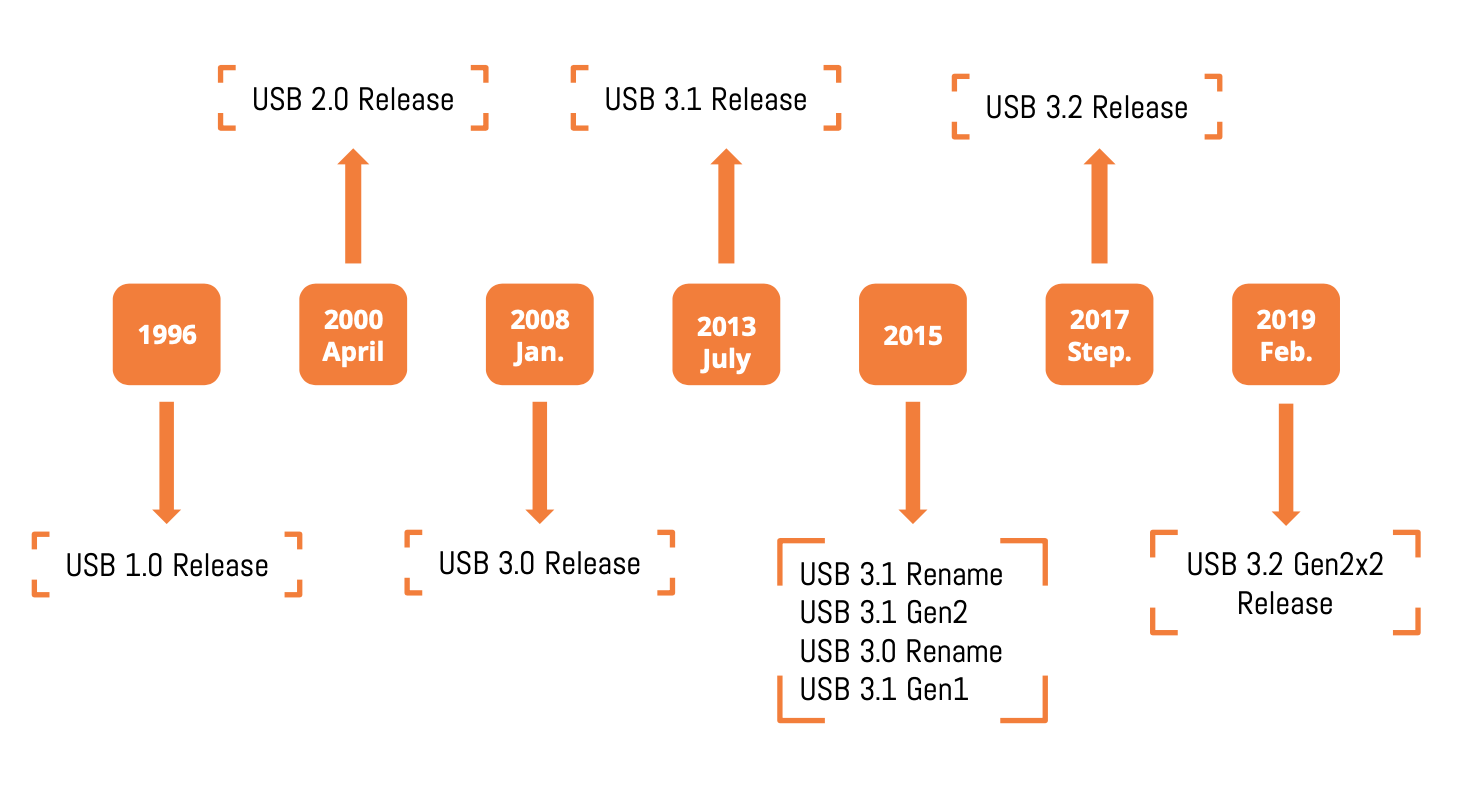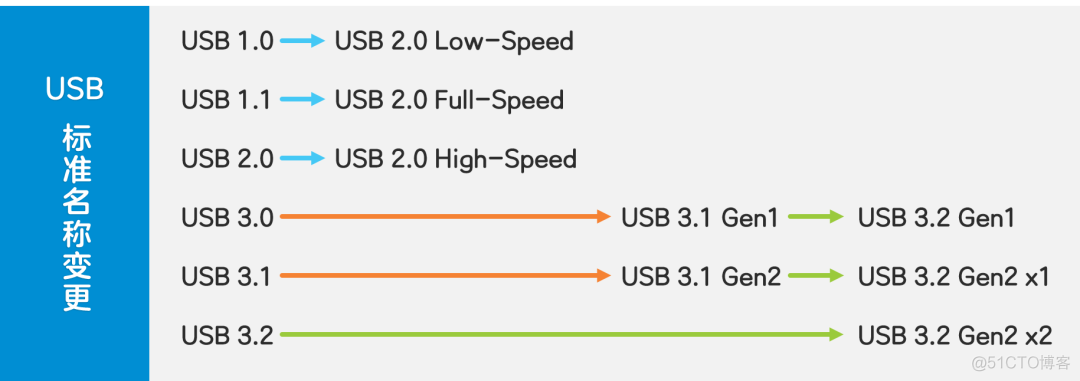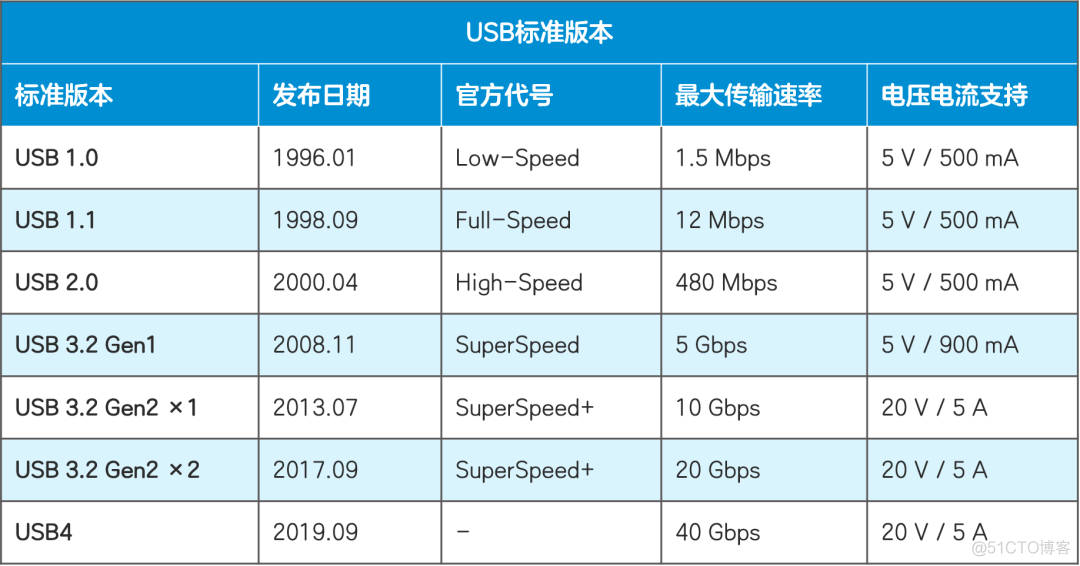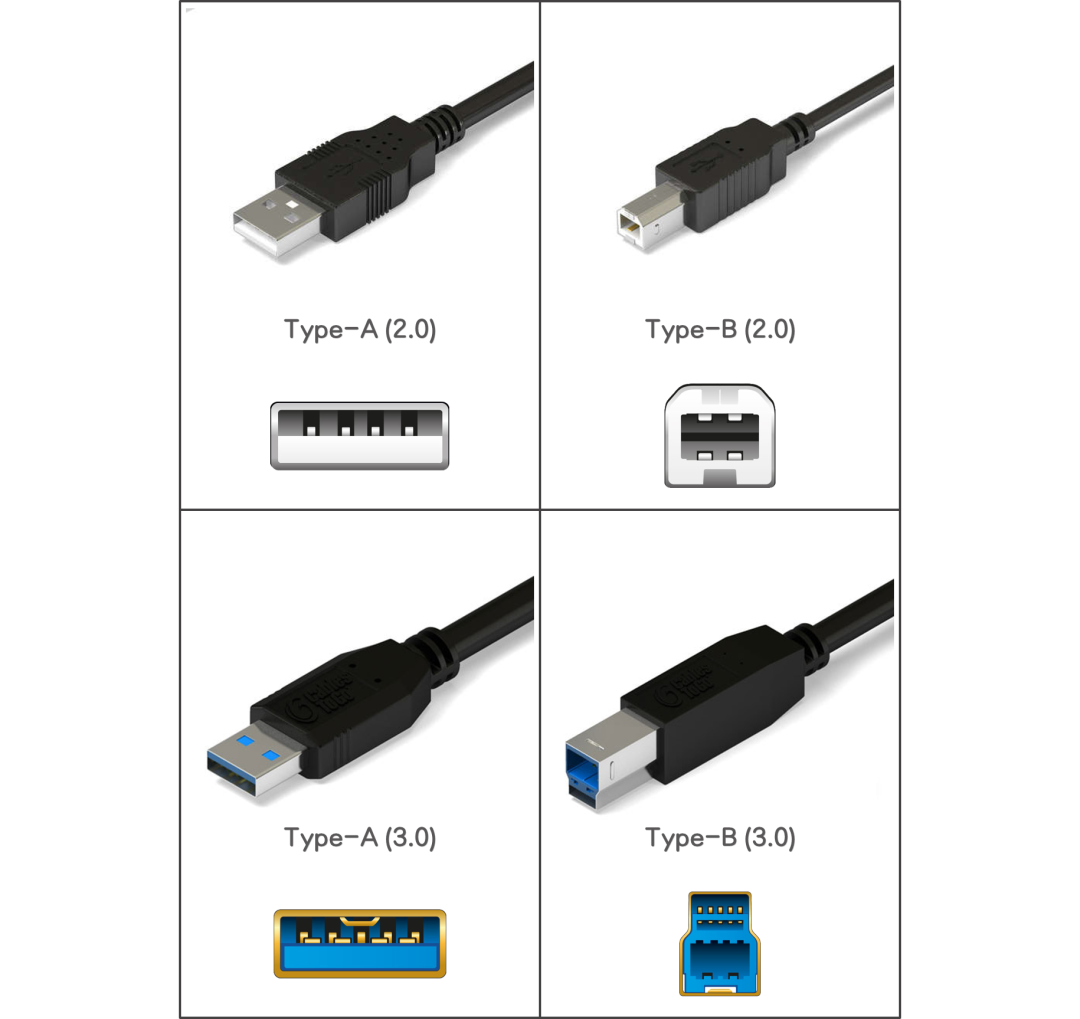USB transfer standard
Since the USB-IF (USB Implementers Forum) organization released the USB 1.0 standard in 1996, the USB standard has experienced the development of multiple versions of USB 1.1, USB 2.0, USB 3.0, USB 3.1, and USB 3.2. In 2019, the USB-IF organization released the latest USB4 standard, bringing a new standard specification to the USB interface. Specifically, you can see the following diagram:  After going through the third name change in 2019, the final name is now like this, you can see the following picture:
After going through the third name change in 2019, the final name is now like this, you can see the following picture:


The Types of USB interface
The USB interface is divided into three types: standard USB interface, Mini USB interface and Micro USB interface.
1. Standard USB interface
It is divided into two types: Type-A and Type-B. The appearance is as follows:

2. Mini USB interface
Mini USB interface is a small USB interface, its indicators are the same as standard USB, but ID pins (used to distinguish whether the device is a host or a peripheral) are added to support OTG (On The Go, this function allows In the case of the device, realize the data transmission between devices) function. The Mini USB interface is mainly divided into two types: Mini-A and Mini-B. The appearance is as follows:

Due to its relatively small size, the Mini USB interface is common on some small devices, such as MP3, MP4, radio, etc., and some types of mobile phones also use this interface.
3. Micro USB interface
The Micro USB interface is the next-generation interface of Mini USB. The plug of the Micro USB interface is made of stainless steel, and the plugging life is increased to 10,000 times. Compared with the Mini USB interface, the height is halved while the width is almost unchanged. Smaller. Micro USB interface can also be divided into Micro-A and Micro-B, the appearance is as follows:

I believe everyone knows the Micro-B type USB interface, but they don’t know its professional name. In the early stage of the development of smart phones, most smart phones (except Apple phones) used the Micro-B type interface for charging and transferring Data interface. After the release of the USB 3.0 standard, the Micro-B interface also has a new shape. I believe everyone is familiar with it. Most of the mobile hard disk boxes that support USB 3.0 we purchased use this interface.
4. Type-C interface
The Type-C interface is a new type of USB interface that has appeared in recent years. For users, I believe the biggest advantage of this interface is that it can be plugged in and out by both sides.
According to statistics, the average time per person is wasted on plugging in USB is 30 minutes per year! The first time I plug it in, I always can’t get it in. When I plugged and unplugged many times to doubt my life, I finally found out that it was correct direction for the first time to plug. The many attempts are just small twists and turns in life. With type C interface, it can finally be done once. The appearance of the Type-C interface is as follows:

The latest USB4 standard currently only supports the Type-C interface, while USB4 adopts the Thunderbolt protocol (commonly known as the Thunderbolt interface protocol, which is an interface protocol developed by Intel. It has fast speed, strong power supply, and is compatible with Thunderbolt, USB, Display Port, PCIe and other interfaces/protocols), therefore, the Type-C interface that supports the USB4 standard is also compatible with the Thunderbolt interface. From this point of view, the Type-C interface is the general trend.
5. USB transmission standard and interface
Finally, a picture summarizes the support relationship between the USB transmission standard and the interface for your reference.

VITALCONN develops, manufactures and sells interconnect connectors which are primarily used in networking, telecommunications, computing, broadcasting, medical industry and consumer electronics markets. Our main products include: Modular Jack RJ11/RJ45, Ethernet Connector Modules (ICM RJ45), Fiber Optics connectors SFP/SFP+ cages, Ethernet Transformer Modules and many other I/O connectors e.g. HDMI connectors, USB Type C, DC Jacks, FPC&Box headers etc. More product info please visit: https://www.vitalconn.com/product-centre/